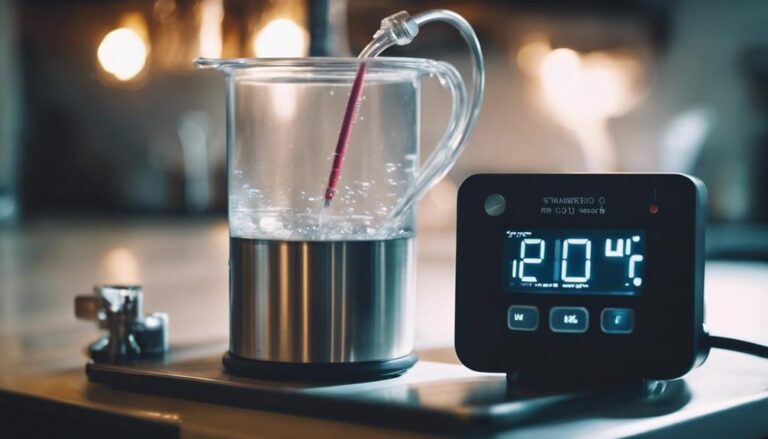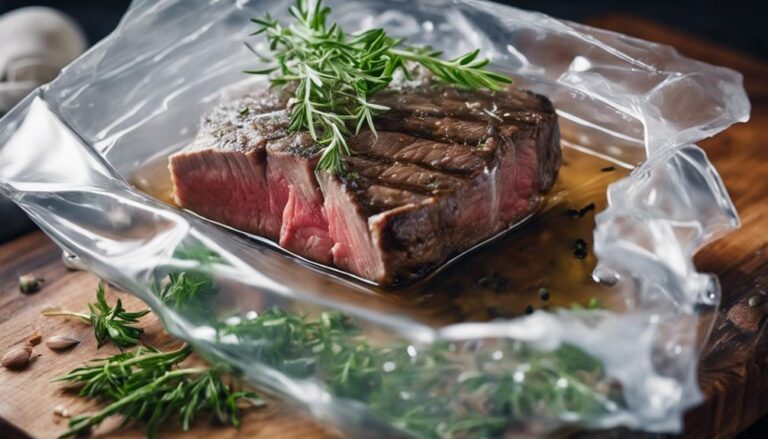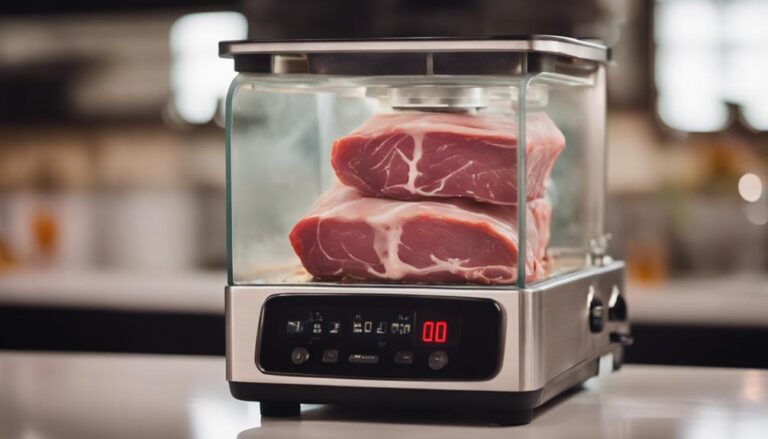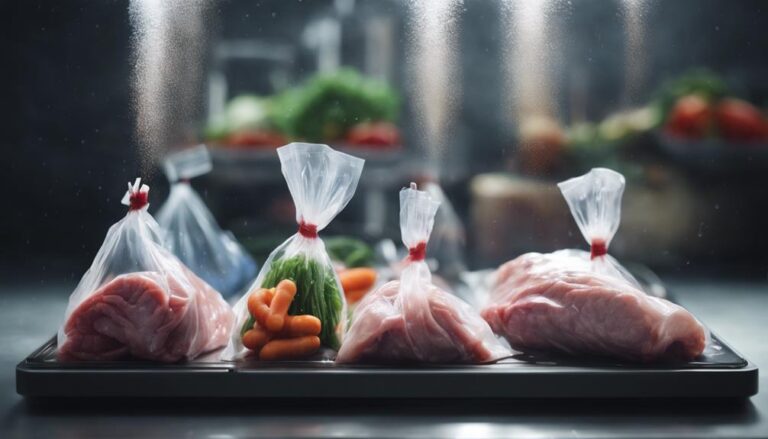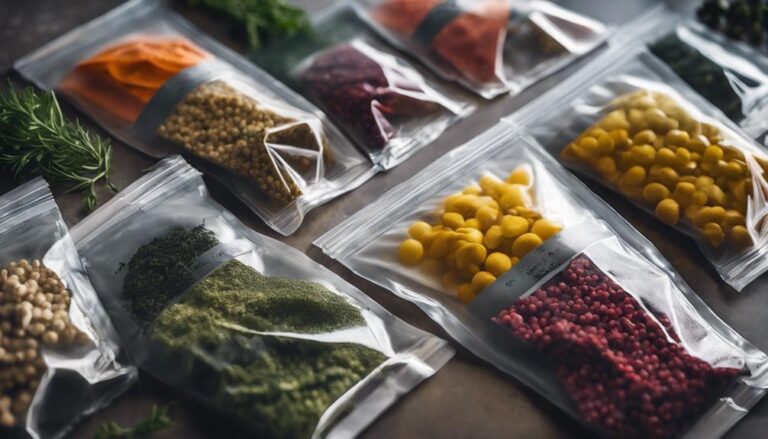The Science of Sous Vide: Understanding Cooking Times
To cook sous vide like a pro, grasp the significance of cooking times. They are key to nailing texture, doneness, and safety. Adjust based on food type, thickness, and desired doneness for a flavor-packed outcome. Factors like thermal conductivity and fat content sway cooking durations. With precise temperature control, achieve consistent results every time. Thicker foods need more time for even cooking. Validate doneness by following these science-backed cooking times. Master these principles to elevate your sous vide game to the next level.
What You Will Learn Here
- Food thickness impacts sous vide cooking times.
- Thermal conductivity and fat content influence durations.
- Accurate temperature control ensures consistent results.
- Longer cooking times for thicker cuts ensure even cooking.
- Precise timing is crucial for safety and doneness validation.
Importance of Cooking Times
Understanding the importance of cooking durations is essential for mastering sous vide cooking. Cooking times play a pivotal role in achieving the desired texture, doneness, and safety of your dishes.
For thicker foods, precise cooking durations are critical to guarantee even cooking and pasteurization. It's crucial to take into account factors like the type of food, thickness, desired doneness, and pasteurization requirements when determining cooking times.
By maintaining a consistent temperature for the specified duration, you can achieve excellent results in terms of flavor and tenderness. Properly calculated cooking durations not only enhance the taste but also reduce harmful bacteria to safe levels, ensuring the safety of your sous vide dishes.
Factors Influencing Cooking Durations
Factors influencing cooking durations in sous vide include the thickness of the food being cooked. The thermal conductivity of the food, its specific heat capacity, the presence of bones, and the fat content also play pivotal roles in determining how long it should be cooked. Understanding these factors is essential for achieving precise results in sous vide cooking.
Thicker cuts of meat or vegetables will require longer cooking durations to guarantee that the center reaches the desired temperature. Foods with higher thermal conductivity will conduct heat more efficiently, impacting how quickly they cook. Specific heat capacity influences how much energy is needed to raise the temperature of the food, affecting the transfer of heat during the cooking process.
Additionally, the presence of bones or higher fat content can influence how heat is distributed within the food, leading to variations in cooking times. By considering these factors, you can adjust your sous vide cooking durations to achieve perfectly cooked dishes every time.
Precision of Temperature Control
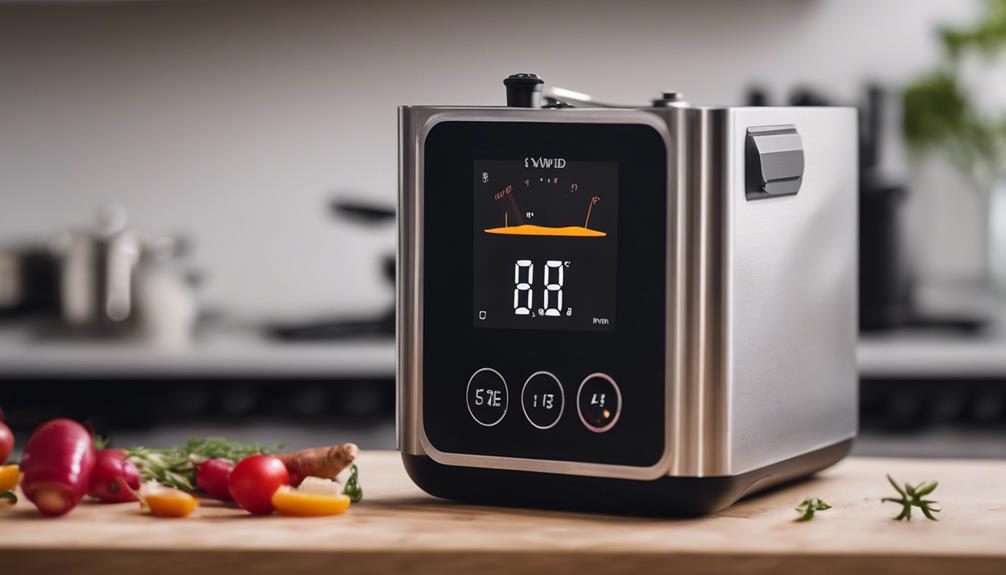
How important is precise temperature control in sous vide cooking for achieving consistent and desired results every time?
In the sous vide method, accurate temperature control is paramount to ensuring that your dishes turn out perfectly cooked with the ideal flavor and texture. Maintaining water bath temperatures within a narrow range, typically between +/- 0.1 to 0.5 degrees Celsius, is critical for achieving excellent results. Immersion circulators play a key role in this process by allowing you to make exact temperature adjustments and ensuring uniform heat distribution throughout your cooking.
Impact of Food Thickness on Timing
Thicker cuts of food in sous vide cooking require longer cooking times to make certain they reach the desired level of doneness. This is because thicker foods possess a larger thermal mass, necessitating more time for heat to penetrate evenly.
When dealing with thicker cuts, it's important to understand that cooking times can vary based on the thickness of the food, its initial temperature, and the desired level of doneness. Precision timing becomes paramount in ensuring that thicker foods are cooked safely and evenly throughout the entire cut.
By grasping the relationship between food thickness and cooking times, you can achieve consistent results in your sous vide cooking. This knowledge not only aids in cooking safely but also guarantees that your dishes are cooked to perfection, with even cooking from edge to edge.
Mastering the impact of food thickness on timing is key to elevating your culinary skills and providing delicious meals to those you serve.
Validating Doneness Through Time

When confirming the doneness of your sous vide cooking, precise time calculations based on desired texture and doneness are essential. Cooking times play a vital role in sous vide preparations, guaranteeing both food safety and best results. Different foods require specific pasteurization times to eliminate harmful bacteria effectively. Understanding the temperature relationship with cooking time is critical for maintaining food safety and quality. Monitoring and adhering to recommended cooking times help control bacterial growth, providing consistent results in your dishes.
Validating doneness through time is vital to ensure that your food is safe to eat and meets your desired texture and flavor profile. By following precise time calculations, you can achieve the perfect balance between safety and taste in your sous vide creations. Consistency in validating cooking times not only guarantees food safety but also ensures that your dishes consistently turn out delicious and satisfying.
Adjusting Cooking Times for Different Foods
When adjusting cooking times for different foods in sous vide, remember that each ingredient has unique requirements.
Variations in cooking times can greatly affect the outcome of your dish.
Pay close attention to specific adjustments needed for best sous vide results.
Food-Specific Cooking Adjustments
To achieve ideal textures and doneness levels when sous vide cooking, it is essential to make precise adjustments tailored to each specific food type. Different foods require varying cooking times and modifications to reach the desired outcomes. Thicker cuts of meats like steaks or roasts need longer cooking periods for proper pasteurization and tenderness, while delicate seafood such as fish may cook faster and risk becoming overdone if not carefully monitored. Vegetables also have their own ideal cooking times to maintain textures and flavors. Mastering the art of sous vide involves understanding these food-specific modifications to guarantee consistent and delicious results every time.
| Food Type | Cooking Adjustments |
|---|---|
| Meats | Longer cooking times for thicker cuts |
| Vegetables | Tailored cooking times for ideal textures |
| Seafood | Careful monitoring due to faster cooking times |
Time Variations for Ingredients
Understanding the time variations for ingredients plays an important role in adjusting cooking times for different foods in sous vide cooking. Meats, vegetables, and seafood each have unique density and thickness, requiring specific cooking times to achieve the desired doneness and texture.
Dense meats like beef brisket may need longer cooking times to tenderize the collagen effectively. On the other hand, delicate seafood such as scallops or vegetables like asparagus demand shorter cooking times to maintain their natural textures and flavors.
Frequently Asked Questions
How Do You Know How Long to Cook With Sous Vide?
For optimal sous vide results, guarantee temperature accuracy, take into account food thickness, encourage water circulation, choose the appropriate protein type, seal your bags effectively, pre-sear meat, allow it to rest after cooking, season at the appropriate time, and calibrate equipment.
Why Do Sous Vide Cooking Times Vary so Much?
Sous vide cooking times vary due to factors like temperature consistency, meat thickness, ingredient density, water circulation, vacuum sealing, cooking vessel, sous vide equipment, protein type, and heat distribution, all essential for precise cooking results.
What Is the Science Behind Sous Vide Cooking?
To master sous vide cooking, you must grasp the science behind it. Control temperature precisely, circulate water evenly for heat distribution, denature proteins for tenderness, infuse flavors, maintain texture, trigger Maillard reaction, and guarantee time accuracy for consistent taste.
Does Time Matter in Sous Vide?
In sous vide, time matters immensely. It impacts texture, flavor, and doneness. Proper timing guarantees safety, flavor development, and precise cooking. Longer times tenderize meat, and understanding time-temperature balance is essential for successful results in sous vide cooking.
Conclusion
Now that you grasp the science behind sous vide cooking times, you can confidently experiment with different foods and recipes.
Remember to take into account factors like food thickness and temperature precision to achieve perfect results every time.
With a little practice and adjustment, you'll soon become a sous vide pro in your own kitchen.
Happy cooking!







